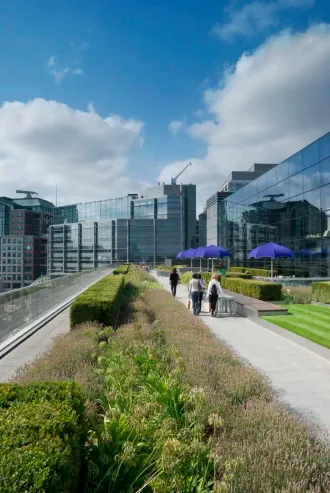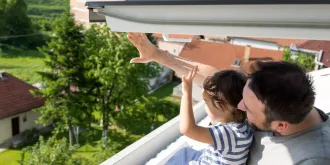Our country pages
Africa
Europe
Search
Up to 10-15 years of extra life for your property's roof with regular maintenance services
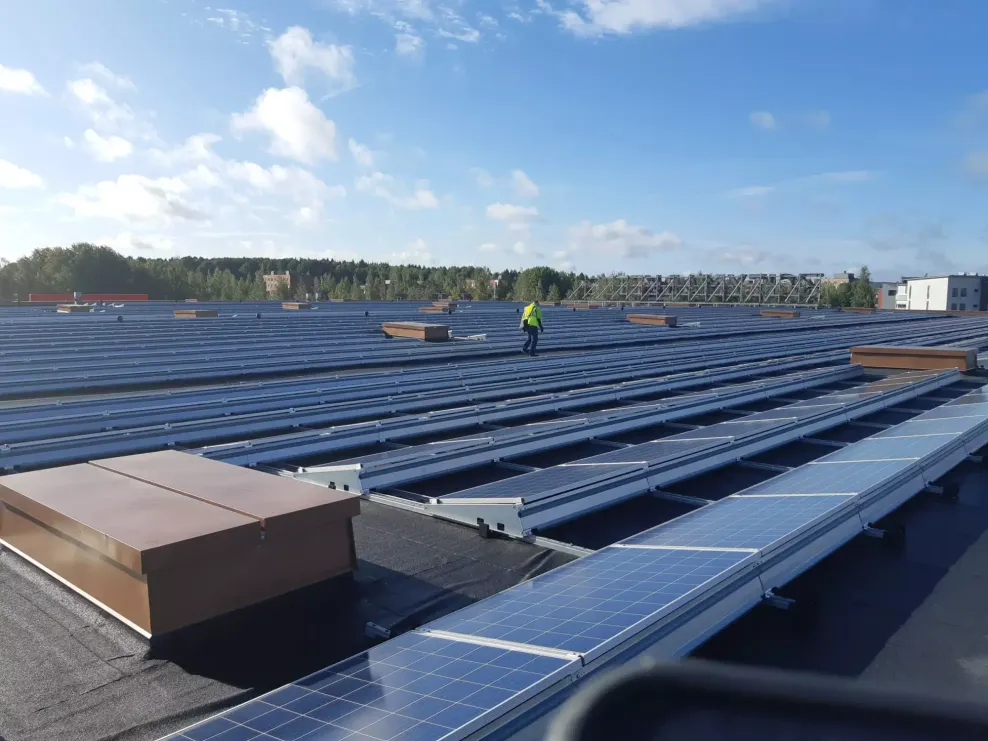
Roofing professionals find the right problem areas
Property maintenance companies carry out roof maintenance, but they are not necessarily professionals in the field.
A roofing professional can see and look at the right things when checking the roof and therefore find the areas in the roof that need to be addressed more quickly. Regular inspection and maintenance of the waterproof roof are key solutions to prevent major damage. These help housing companies keep track of when it is time to start roof renovation.
According to BMI Finland, the most common problem with roof maintenance services is that property companies do not order inspections and maintenance by roofing professionals. Roof inspections of buildings are often carried out by a property maintenance company.
Roof maintenance is thought to go hand-in-hand with other inspection and maintenance work, and the condition of roofs is not seen as an important entity in its own right. They will only be contacted when the roof is already leaking", say Antti Nieminen, Production Manager at Icopal Katto Oyand Mona Leino, Product Group Manager at BMI Finland.
"Regular maintenance allows us to anticipate years in advance when it would make sense to carry out a roof renovation. This helps to make long-term plans and investments".
Antti Nieminen, Production Manager, Icopal Katto Oy
In larger towns and cities, roof inspections and regular maintenance contracts are already commonplace. At best, the average roof can last up to 10-15 years without major renovation.
What to consider when planning roof maintenance?
Icopal Katto Oy's maintenance services work with all roofing materials, and the size of the housing company has no influence on the amount of work.
However, the most important thing is to get the roof maintenance contractor to know the maintenance history of the property and what problems have been experienced with the roof in the past. In addition, safety issues are taken seriously in BMI Finland.
When planning a roof maintenance package, it is a good idea to consider whether maintenance should start as soon as the roof is replaced, or only when the roofing material is a little older. In addition, when planning maintenance, it is a good idea to take into account the type of trees around the site. The amount of trees and foliage largely determines whether maintenance is carried out twice a year.
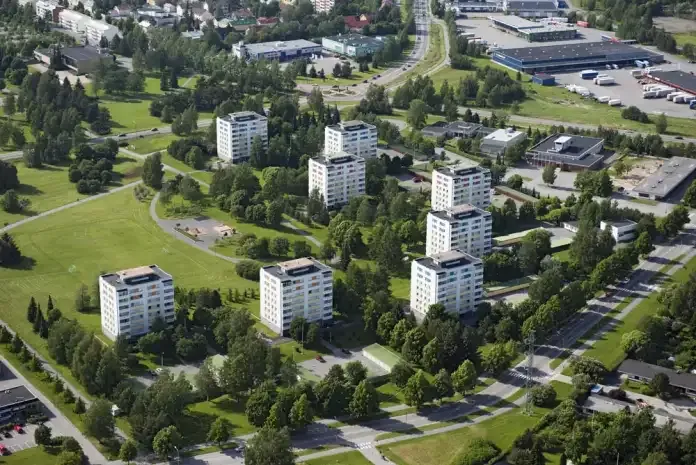
From BMI Finland you get extensive expertise for all roofs
Before a seasonal maintenance contract is signed, it is recommended that all roofs be inspected or subjected to a more extensive condition survey to plan for the future. Icopal Katto Oy's technical services include:
- Roof condition inspection g Roof condition survey
- Seasonal maintenance of the roof
- We provide comprehensive reports on inspections and investigations, which we use to plan the next steps together with the client.
At BMI Finland you always get comprehensive roof maintenance. If the situation arises, we will also advise you on what to do and how to do it. We do all this with decades of experience in roofs. We are familiar with old structures and materials, and we manufacture roofing materials ourselves.
We hope that our customers will not hesitate to contact us. We offer extensive support through our Technical Centres:
- There is no question about roofs and roof maintenance that is too minor for us to answer", concludes Mona Leino.
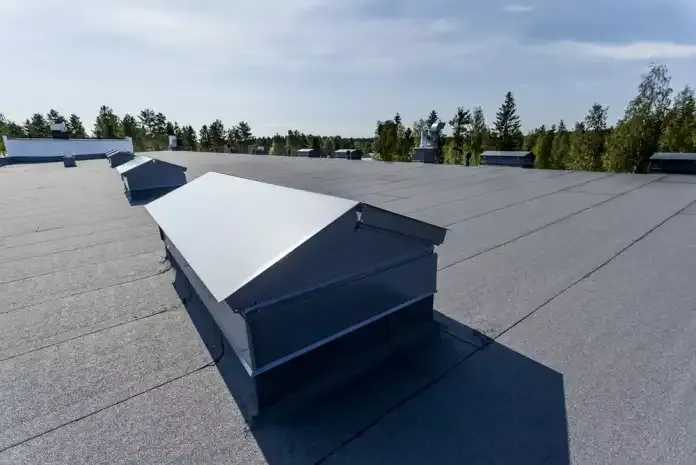
FAQ about Green Roofing
What is a green roof?
A green roof is a flat or sloping roof covered with vegetation. When building a green roof, it’s important to think about its composition, which must be made up of layers of different but interacting materials to ensure
- water accumulation
- water tightness
- protection against root action
- mechanical protection
- draining and filtering activity
- nutrients get to the plants.
Are green roofs eco-friendly?
Green roofing has a lot of benefits when it comes to dealing with sustainability, the environment and climate change concerns, particularly smog and pollution. These benefits include
- encouraging wildlife: rooftop habitats can provide a 'green link' that connects natural pockets of habitat to each other. They can also provide isolated habitats that are not disturbed by other green areas at ground level
- improving air quality: green roof plants improve air quality by absorbing atmospheric carbon dioxide and releasing oxygen.
- improving temperature regulation: through the daily cycles of condensation and evaporation, plants are able to cool and humidify the surrounding air, improving the microclimate
- reducing and slowing stormwater runoff: in urban areas in certain climates, green roofs can retain nearly all storm-related water during the summer months, and up to 20% during the winter months.
What are the best plants to use on a green roof?
It is often best to plant species on a green roof that require minimal maintenance. Vegetation composed of sedum essences can survive extreme drought and easily regenerate and self-propagate.
Green roof design can also include Blue Green Roof technology, which offers all the performance features typical of green roofs while offering the possibility of storing, conserving and reusing rainwater. It is also a useful solution for reducing the effects of extreme rainfall that can cause localised damage.
What is the most eco-friendly roofing material?
When it comes to choosing roofing materials, strong, durable and - more recently - eco-friendly characteristics are most often selected. These traits are available in both materials and solutions. For example:
- wooden shingles: these are shingles made from shredded wood from controlled forests
- slate and clay roof tiles: terracotta roof tiles are made from porous ceramic with clay as its base. Clay is a natural material and has been used in the building process for centuries due to its durability and low maintenance
- solutions with unique characteristics: such as Noxite bituminous waterproofing membranes, which not only provide a high-quality flat roof, but reduce pollution by using the sun to transform harmful nitrogen oxides (NOx) into harmless nitrates, which are washed away by the rain. Noxite is a highly effective means of reducing the ongoing environmental impact of a building as it continues to function throughout the life of the roofing membrane
- green roofs: the green roof solution reduces the heat island effect, boosts the insulation capacity of the environment below and improves air quality
- cool and white roofs: these reduce roof radiation by reducing overheating and so the air conditioning required.
Are green roofs expensive?
The price of a green roof depends on the size of the roof, the steepness or pitch, the type of green solution chosen and the vegetation planted. When considering the cost, remember to take into account the benefits of green roofs as a source of clean air, emotional wellbeing and environmental diversity.
If you’re investing in a green roof, it’s important to know exactly what the benefits are so that you get a great return on investment:
- roof membrane protection: vegetation on a roof deck protects the roof surface from the extremes of weather, temperature and UV radiation, which can significantly increase its lifespan
- reduced storm water run-off: water is stored by the green roof substrate and then taken up by the plants, where it is returned through transpiration and evaporation into the atmosphere. The drainage layer in green roofs also delays the rate at which water run-off occurs, reducing stress on drains and sewers during heavy rainfall
- reduced energy costs: the layers of a green roof system improve the thermal performance of the roof, helping to keep the rooms below cool in summer and warm in winter (although this effect is generally not included in any U-Value calculations).
How long do green roofs last?
Green roofs can extend the life cycle of a roof for more than 30 years as its layering makes it more durable than normal roofs. It is important, though, that the membrane and the stratigraphy (or layers) are correctly installed.
How long does a flat roof last?
A flat roof usually has an average lifespan of about 15 years. Many of its components require maintenance from time to time and, if this is not done, the roof can be damaged by infiltration. To make the roof last as long as possible, it is important to carry out frequent inspections and work on the drainage system.
How frequently should roof maintenance be performed? And what does this involve?
The health of the roof changes over time depending on the attention you give it. To ensure high quality roof products remain fully functional over decades, it is essential to follow a regular maintenance programme.
Maintenance problems normally include infiltration, cracks in the roof covering or tiles, deterioration of the membranes and insulation. If not repaired, the roof's insulating performance will decline.
Inspect your roof after storms and high winds, and at major discontinuity points, and clean it periodically.
And remember to check your product’s warranty, whether you have installed just a few tiles or an entire roof system. A good warranty can protect you from costly repairs in the future.
How do you install a green roof?
A green roof is a surface that needs to be made waterproof to avoid damage from water seeping in. So, it is essential to have an anti-root membrane and a draining layer that will help carry away excess water from the rain or gutters.
Then, adding a drainage mat and felt layer will allow the water to pass through and the roots to attach themselves to the growing medium. The drainage layer will then provide the growing platform for the green roof. The composition of the soil is also important as it aids proper plant nutrition and growth.
Finally, the roof must include an irrigation system, possibly water-based, so as not to overload the roof, and reduce water consumption and waste.
If you choose an intensive green roof, you can plant classic garden plants, both herbaceous and shrubs. If you opt for an extensive green roof, low-lying and creeping plants are best as they are suitable for growing in thin layers of substrate.
What is a blue roof and why is it considered environmentally friendly?
A blue roof can be key to sustainability in buildings, particularly in urban areas where a ground level solution may not be possible due to lack of space. Benefits of a blue roof include
- temporarily store rainfall to reduce runoff
- reduce the flow rate of water from the roof
- store water for reuse in other areas of the building, such as irrigation or cooling
- make up the drainage and support layers for green roofs
- Easy to maintain.
If your business is located in an area particularly prone to flooding, then a blue roof system can also help to protect your building (and neighbouring ones) from damage.
Contact Us
Contact Us
Contact our local team
We can support you to define solutions and services for specific country.
Media Contact
Contact us for more information on BMI Group
group.communications@bmigroup.com

